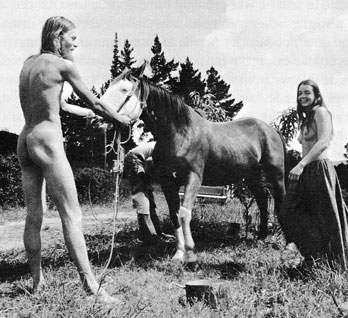Story summary
Communes and intentional communities are formed when people from more than one family live co-operatively because of a shared belief – this can be religious, political, social or environmental. In some, the members share all their money and possessions, while in others people own their own homes and share only a few facilities.
Non-traditional Māori communities
Māori traditionally lived communally in tribally based groups. However, there have been some communities formed by followers of a particular leader.
- Parihaka, in Taranaki, was formed by followers of the prophets and resistance leaders Te Whiti-o-Rongomai and Tohu Kākahi in the late 1860s.
- A community was created at Maungapōhatu in the Urewera in 1907 by Tūhoe prophet Rua Kēnana.
- From the 1920s a settlement of followers developed around the farm of the religious leader Tahupōtiki Wīremu Rātana, south-east of Whanganui.
Early Pākehā communities
The Rootsites, founded in 1874, were a Brethren community run by Joseph Bridgeman Roots in Halcombe, near Feilding.
Beeville was an anarchist commune near Morrinsville. It started in 1933 and ran for about 40 years.
Riverside was founded by Christian pacifists in 1941 at Lower Moutere, west of Nelson. It was still active in the 21st century, but was no longer religious.
Communes from the 1960s
In the late 1960s and 1970s many idealistic young people set up communes, especially in Coromandel and the Nelson region, where land was beautiful and cheap. They often were interested in the environment, and tried to be self-sufficient. Some of these communes still operated in the 21st century.
One of the best-known was the commune set up by poet James K. Baxter at Jerusalem on the Whanganui River in 1969. It was based on voluntary poverty, Catholicism and Māori spiritual values.
In the 1980s feminists established women-only communities – mostly lesbian.
The Centrepoint commune, founded north of Auckland in 1979 by psychotherapist Bert Potter, encouraged personal growth and confrontational therapy. In 1992 Potter and six other residents were convicted of sexual offences.
While most communes were in rural areas, some were in cities. Chippenham, in Christchurch, was started in 1971. It survived as part of the Heartwood Community in the 21st century.
Ohu
In the 1970s a government scheme leased land to groups who wanted to set up co-operative communities – known as ohu. However, much of the land was remote and scrub-covered, and the communities struggled to survive. The longest-running was the Ahu Ahu ohu up the Whanganui River, which lasted until around 2000.
Eco-villages and co-housing
Eco-villages were the fastest-growing type of intentional community in the 21st century. They are built using sustainable materials and have some communal facilities.
Co-housing communities are made up of separate households, but have a village-type community.
Religious and spiritual communities
Christian religious orders often live communally. These orders are usually Catholic, such as the Marists, Sisters of Mercy and Sisters of Compassion.
Other Christian communities have included Camp David in Waipara, founded in 1974, the Quaker Settlement near Whanganui, and Gloriavale, a conservative Christian community on the West Coast.
In the 21st century there were a number of Buddhist communities in New Zealand, and a Hare Krishna community.





